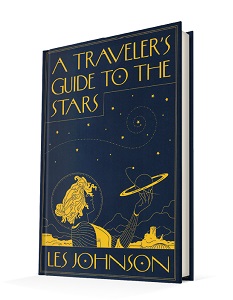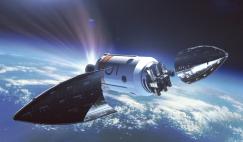As a physicist, avid science fiction reader and experienced research project leader, the author of this primer on the science of interstellar travel thought he was “mentally prepared to think out of the box”. But his work for NASA on an interstellar propulsion project was a revelation in that he “came to believe that going to the stars is something that can actually be done”.
According to the author, this is intended to be a readable and accessible book: “There are enough technical books out there on this subject”, he says. “I did not need to write another”. He has certainly succeeded in his goal (to the extent that the only equations are F=ma and E=mc2).
The book’s eight chapters introduce interstellar travel, put it into historical context and discuss the design of starships. This design includes, of course, the method of propulsion, so he covers all the usual suspects - rockets, light and fusion. The final chapter, entitled “Scientific speculation and science fiction” does what you’d expect and goes the extra mile to discuss space warps, wormholes and suspended animation. The volume concludes with a glossary, chapter notes, references and an index.
It is illustrated only sparsely with black-and-white diagrams but the text itself provides the colour. For example, in his context chapter, this American author remembers a British college friend in London whose “flat” he visited (he is careful to provide the translation of “apartment”): apparently, when asked when it was built, his friend replied “It is fairly new, built in the early 1800s or so”. The author notes that he was staying in a property built when his own country was “barely twenty-five years old”. The “long view” required for anything from cathedrals to starships is not lost on this author!
He also addresses the humans versus robots debate with an anecdote about Buzz Aldrin, who asked the audience of a technical conference how many of them would “sign up for a one way trip to Mars”. To the author’s amazement, about 70 percent of the “room of scientists and engineers who fully understood the risks” raised their hands, when only moments earlier many had been “adamantly on the side of robotic-only exploration”. From that point, says the author, “the tenor of the debate changed from an ‘either/or’ proposition to ‘both, at the proper time’… the pattern established since the beginning of space exploration”.
The author of this fascinating little book is clear that crossing the “gulf between the stars” will require the development of technologies that do not currently exist, but argues that this “doesn’t mean it is too early to begin planning”. Ad Astra and Make it So!











